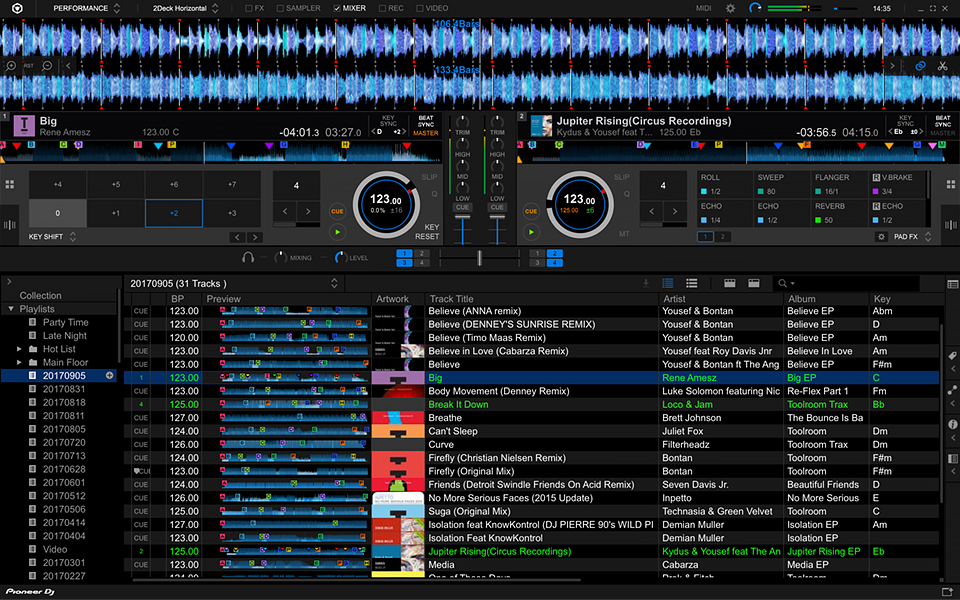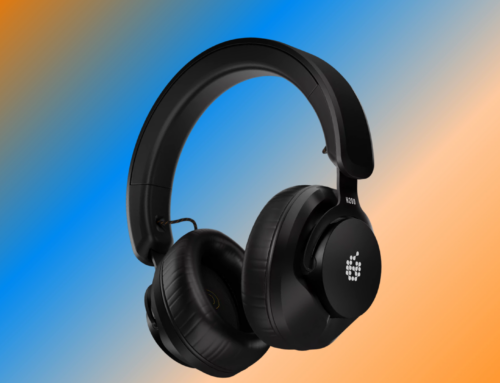If you’re an experienced DJ, Pioneer’s Rekordbox design will surely ring a bell. Its interface is incredibly similar to what you’d see while using Native Instruments’ Traktor, Virtual DJ or Serato. The approach that the developers had taken appears to be the safest and the surest one possible in their particular circumstances: “do as the others, but slightly better.” As you may already know, Rekordbox is a product developed by Pioneer and has been crafted as a response from the DJ industry’s mogul to the newer generation of laptop-based DJ’s. Pioneer has been responsible for a wide array of legendary products in different categories and has been considered to be a golden standard in the field.

The software is fast, and it is known to have the lowest latency among the industry’s most popular DJing software options. The layout of the interface is intuitive and comfortable. The design has no irritating or annoying features. It’s safe to say that it’s novice friendly. It is often the case that people are converted to DJing by the means of such software, and by the look of it, it has a playful and exciting character to it, so the potential is there.
The library management is better than on most other software because you have instant access to metadata. You can rate your tracks, and even tag them. Your entire library becomes rationally segmented, and you’re in a few clicks’ distance from what you need.
Moreover, there have been some workflow features that have been added to your library management that are simply great. Rekordbox syncs with your iTunes library, which is not an innovation, of course, but is a feature you’ll only find on few DJing software on the market. Plus, after having played a set you particularly enjoyed, Rekordbox allows you to save the mix from the built-in history.
A testimonial to the quality of the Rekordbox software is the fact that it’s been head butting Serato for quite a while right now, and there have been many converts already. The current state of affairs on the DJ software market does present the two as leaders, but apparently, Pioneer has got some catching up to do.
 Simply due to the fact that Rekordbox has appeared on the market comparatively later than the rest, it is common that some bugs may occur, although these are continuously worked on. While some users have had a blast using it, there have been reports that the software crashed during performances and that the workflow may not have as smooth as with Serato or Traktor. Furthermore, since Pioneer hasn’t been on the market in the form of a DJing software for long enough, not many controllers have been designed with Rekordbox in mind. Serato still has more effects on board, while Rekordbox was able to compensate that with a set of RMX-1000 FX. Another important feature that needs to be compared is the DVS function, of course. Surely these are Serato waters, as it has almost been ten years since the turntablist movement has been flooded with the Serato software.
Simply due to the fact that Rekordbox has appeared on the market comparatively later than the rest, it is common that some bugs may occur, although these are continuously worked on. While some users have had a blast using it, there have been reports that the software crashed during performances and that the workflow may not have as smooth as with Serato or Traktor. Furthermore, since Pioneer hasn’t been on the market in the form of a DJing software for long enough, not many controllers have been designed with Rekordbox in mind. Serato still has more effects on board, while Rekordbox was able to compensate that with a set of RMX-1000 FX. Another important feature that needs to be compared is the DVS function, of course. Surely these are Serato waters, as it has almost been ten years since the turntablist movement has been flooded with the Serato software.

In a general perspective, there are very few things that Pioneer can do poorly, and no DJing related product is going to be subject to that. Rekordbox is a very well executed software, and the needs of its end customers have been truly thoroughly researched. It is very probable that in the following five years the controller DJ market will be reformed and, chances are, that Pioneer will take the lead with their very elaborate and promising product.




